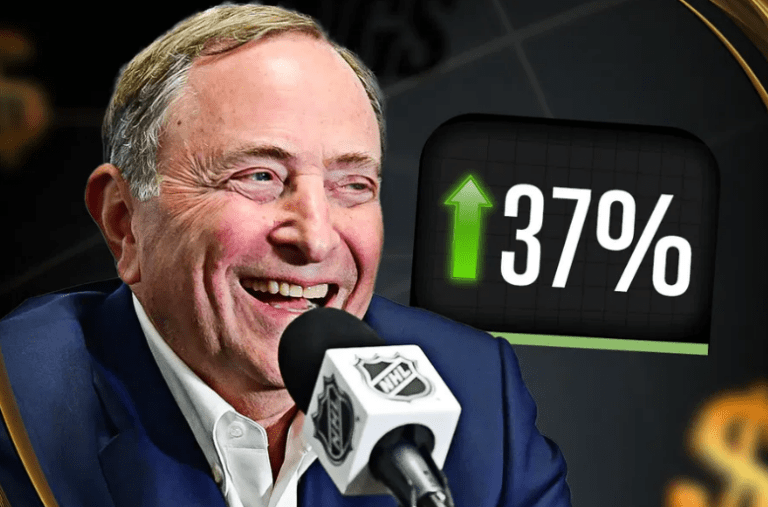By: Parnab Bhattacharya, EssentiallySports
Apr 3, 2025 | 12:48 PM EDT
Click here to read full article on essentiallysports.com.
Analyzing NHL’s rise: The what and the how
Primarily, four factors have contributed to the sustainable growth of hockey in the United States:
The never-ending pool of talents:
NHL has managed to bring a steady supply of generational talents into the sport. Think of Sidney Crosby and Alex Ovechkin – the rivalry is going strong 20 years after it started. Then, the next generation of stars, like Connor McDavid, Auston Matthews, and Nathan MacKinnon, are peaking. On the other hand, Macklin Celebrini, Will Smith, Luke Hughes, and the like are rising fast through the ranks.
The influx of these youngsters has also injected a bunch of new fans into the sport. Audiences, 24.7% of whom belong to the 18-34 age group, are also enthused by the improved broadcast and more accessible streaming.
The unsung hero: Technology
Is there any game in the world that has been as positively impacted by technology as hockey? Probably not. It’s easier to track the puck now because of the improved quality of the broadcast. Moreover, thanks to the NHL’s partnership with SportsMEDIA Technology (SMT), referees and match officials can now track the player and puck movement with more accuracy.
So, there are fewer grumbles and more claps from fans. The advent of 4K will take it up a notch higher in recent years. Now add to that Hockey’s inherent thrill – the fastest players can skate at 25.5MPH + per hour compared to footballers, whose maximum running speed touches 22MPH. So, there is zero surprise that viewership numbers have grown massively in recent years.
A steady growth in viewership numbers
“It’s not rocket science: It’s the number of eyeballs watching your product. They [NHL] have done a really good job of expanding their fanbase, and that’s the key,” Salvatore Galatioto, a marketing professor at Columbia, told AP last year. And the NHL has surely cracked that code, as is evident from its burgeoning viewership growth.
- ESPN, ABC, and TNT averaged 504,000 eyeballs last year, an 8% Y-O-Y increase.
- The 2023-24 season was the most-watched in 30 years.
- In-person attendance rose to a whopping 22.8M — the highest in the NHL’s 106-year history.
Consequently, broadcasters are willing to cough up big money to the NHL. The recent agreement with Rogers Communication, first reported by Sportico and later confirmed by AP, will kickstart in the 2026-27 season for 12 years.
- Rogers reportedly agreed to a $7.7 billion ($11B CAD) media rights deal to broadcast NHL games in Canada.
- It’s nearly double of what the company paid ($4.9B) last time in 2013.
- Stateside, the NHL earns $410 million annually from ESPN/ABC. Another $225 million comes from TBS/TNT.
Yes, it’s meager compared to what the NFL rakes in each year from six different platforms ($12.4B) and what the NBA does ($1.6B). But the yearly growth in viewership, franchise valuation, and revenue speaks for the booming business at NHL. And there is no slowing down. Quite the contrary, in fact. The NHL has already set its eyes on the future.
NHL is expanding its horizon
Did you know that over 22 million people watched the Stanley Cup playoffs in China? Yes, in China, interest in hockey has grown by leaps and bounds. The NHL has taken an approach similar to the NBA by promoting the grassroots development of the game. Notably, there are around 20 hockey schools in China that are affiliated with the NHL.
Then there is the Four Nations Face-off.
- 16.1 million people in North America watched the USA-Canada final.
- One in every four Canadians tuned in to watch the match.
- The seven-game averaged 6.5M viewers, up 256% from the 2016 World Cup of Hockey.
The NHL’s next step is to grow the game even more. The first goal is to get American viewers to watch matches involving Canadian teams. It’s good for the NHL that the tide is turning in their favor—ratings have been high even for matches involving Canadian teams. The future of the NHL looks bright, and the growth in average valuation is only one indication of that. At this rate, the sky is the limit.
